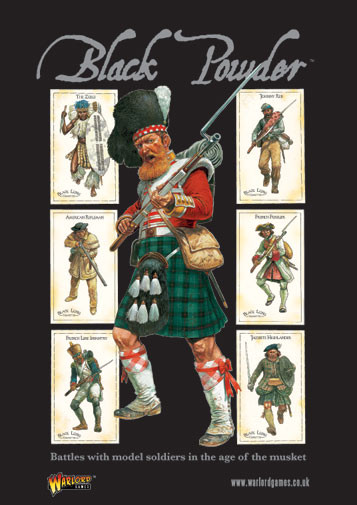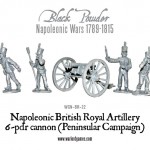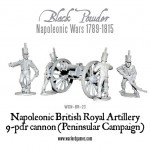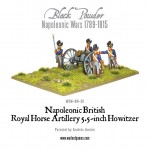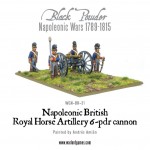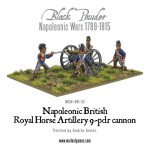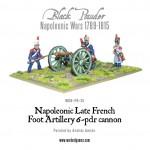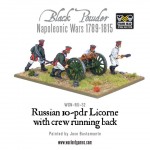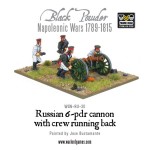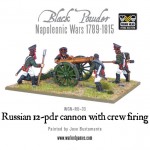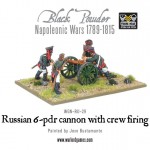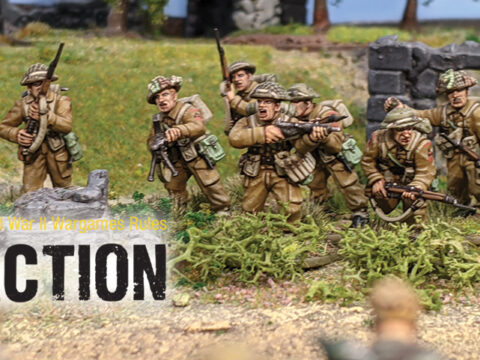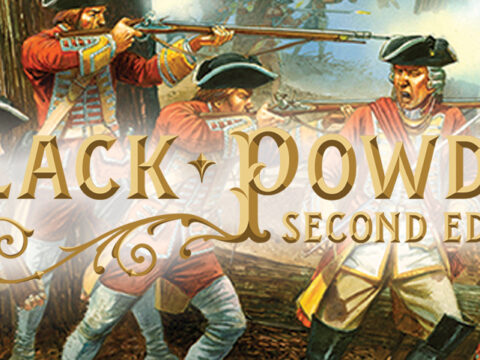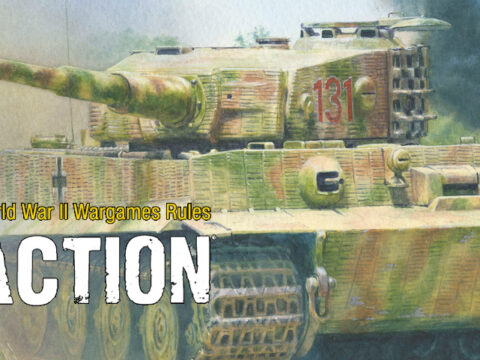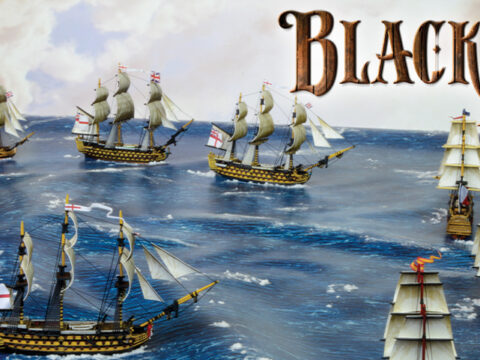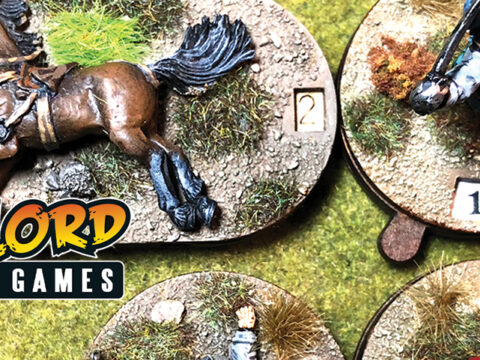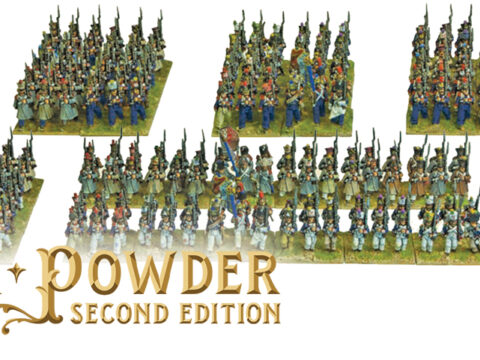“In battle they [British gunners] display judicious activity,
a perfect coup d’oeil, and stoical bravery. …
English troops take few guns into the field with them …”
– General Foy
Thanks to the writings of Mercer and other Royal Horse artillery officers, an impression is given that the entire British army artillery consisted of horse artillery batteries, at least to the casual interest of most, however this represents the much overlooked Royal Artillery, by far the largest contingents of guns in the army, tracing origins back to 1716.
The British artillery of the Napoleonic Wars was well trained, efficient and motivated. Their officers were very much educated professionals. They did not, could not, buy their commissions or promotions. However, the effects of all this excellent training were often negated by the small size of the artillery corps and the fact that promotion was by seniority rather than by merit.
The French had a high opinion of the British artillery. General Maximilien Foy colonel of the 5th regiment of horse artillery aide-de-camp to Napoleon Foy commanded a division of infantry in the battles of Ligny and Waterloo, writes:
“The artillery holds the first rank in the army; it is better paid, its recruits are more carefully selected, and its period of enlistment is limited to 12 years. The gunners are distinguished from other soldiers by their excellent spirit. In battle, they display judicious activity, a perfect coup d’oeil, and stoical bravery.”
“English troops take few guns into the field with them; the most that Lord Wellington ever had in the Peninsula, barely amounted to two for every thousand men. Frames, caissons, barrels, and bullets, powder, and every part of the equipage, are remarkable for the goodness of the materials, as well as excellent workmanship.”
Up until 1825 batteries were called after their commander’s name. The battery had 6 pieces and was divided into 3 divisions with 2 guns each. Each division was under the command of a subaltern officer. In November 1808 the artillery in the peninsula was organised as follow:
• 1st Brigade RFA (4 light 6pdrs, 2 5 ½ inch howitzers)
• 2nd Brigade RFA (5 light 6pdrs, 1 5 ½ inch howitzers)
• 3rd Brigade RFA (5 medium 6pdrs, 1 5 ½ inch howitzer)
• 4th Brigade RFA (5 long 6pdrs, 1 5 ½ inch howitzer)
During the campaigns in Spain, it became obvious that the 6pdrs were no match for the French “belles Filles “ the famous 12pdrs. The 9-pounder Blomefield was introduced to the Royal Artillery c.1809 in order to provide a weapon to match the French artillery The 9pdr cannon was heavier and less manoeuvrable than the 6pdr and required more horses to draw it.
In fact, the 9-pounder was adopted in Spain, say Lieutenant Colonels Robe and Harding, due to the simple fact that they had a similar effective range to the 12-pounder, but more importantly, only required 8 horses to move them, as opposed to the 10 needed for the 12-pounder. This replaced the 12pdr.
In 1812 at Salamanca the artillery was under Lieutenant.-Col. Hoylet Framingham
British foot batteries: Lawson’s, Gardiner’s, Greene’s, Douglas’, May’s, by this time the 9pdr had replaced the majority of the 12 and 6pdrs, however Lawson and Mays batteries still retained 3 2gun divisions with the long version of the venerable 6pdr.
Uniforms and guns
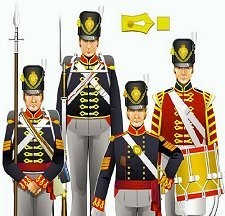
The cannon barrels were brass, with the carriages, wheels and limbers painted grey, while metal parts were black
For campaign, the gunners wore loose white or grey trousers. Originally they were worn over the breeches and gaiters. Later they were worn in their own right as trousers and the buttoned side fly was abandoned.
The coat was blue, single-breasted and buttoned to the waist. Junior NCOs and lance sergeants wore yellow worsted chevrons to denote their rank. The collar was of red serge, three inches deep and lined about by flat yellow worsted lace. The red shoulder straps had a yellow crest or roll where they were sewn to the shoulder of the tunic and were pointed at the other where they were secured close to the collar by a button.
The officer’s sash was of crimson silk net and worn around the waist, over the sword belt. Officers wore epaulettes with badges of silver. The foot gunners wore shakos.
Britain’s secret weapon
Artillery batteries had a limited choice of ammunition with which to kill the enemy – roundshot (cannonballs), canister, or shell.
Cannonballs were solid balls of iron that varied in size and their weight, These balls would be aimed at various types of targets, formed infantry, fortifications and the success of it would depend upon how it bounced, rolled or hit them. While scores of men could be flattened by one bouncing roundshot on dry ground, in wet weather the ball could just hit soggy earth and stop.
Canister, or case-shot, was a lethal short-range choice to cause maximum casualties among the enemy.Built of thin tin, the case was filled with lead balls of up to 200 grams each and would break apart upon leaving the barrel of the gun.
The spread of shot could shatter enemy ranks, leaving them with huge gaps to plug.
The third choice a gunner had was a common shell, fired from howitzers which again was thin-skinned, but had a timing fuse cut so that it would explode within, or near, large bodies of enemy troops.
In 1784 Lieutenant Shrapnel developed an anti-personnel weapon called by him ‘spherical case’ shot. His shell was a hollow cast-iron sphere filled with a mixture of balls and powder, with a crude time fuse. If the fuse was set correctly then the shell would break open, either in front or above the intended target, releasing the musket balls. The explosive charge in the shell was to be just enough to break the casing rather than scatter the shot in all directions. As such his invention increased the effective range of canister shot from 300 to about 1100 m.
It took until 1803 for the British artillery to adopt it. Wellington used it beginning in 1808 and also in the Battle of Waterloo, and wrote admiringly of its effectiveness. Admiral Sir Sydney Smith was so enthusiastic that he ordered 200 shells at his own expense. Wellington’s gunnery commander Colonel Robe said, “no fire could be more murderous.” French infantrymen were so frightened by the casualties that they were often taken prisoner lying down!
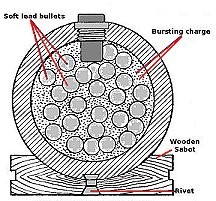
Comparison of relative ranges
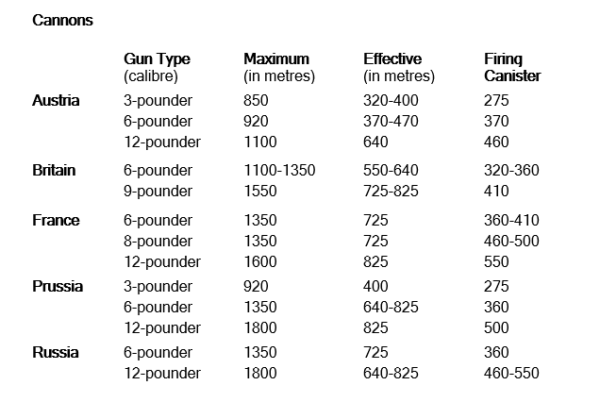
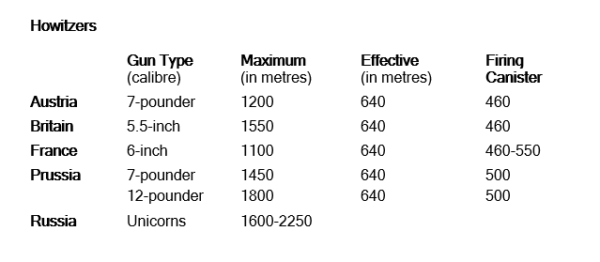
Chandler, David, Dictionary of the Napoleonic Wars. Macmillan, 1979.
Osprey, Artillery equipment of the Napoleonic wars.
Warlord’s range (pun intended!) of artillery models has been growing recently so why not check them out in our webstore.
